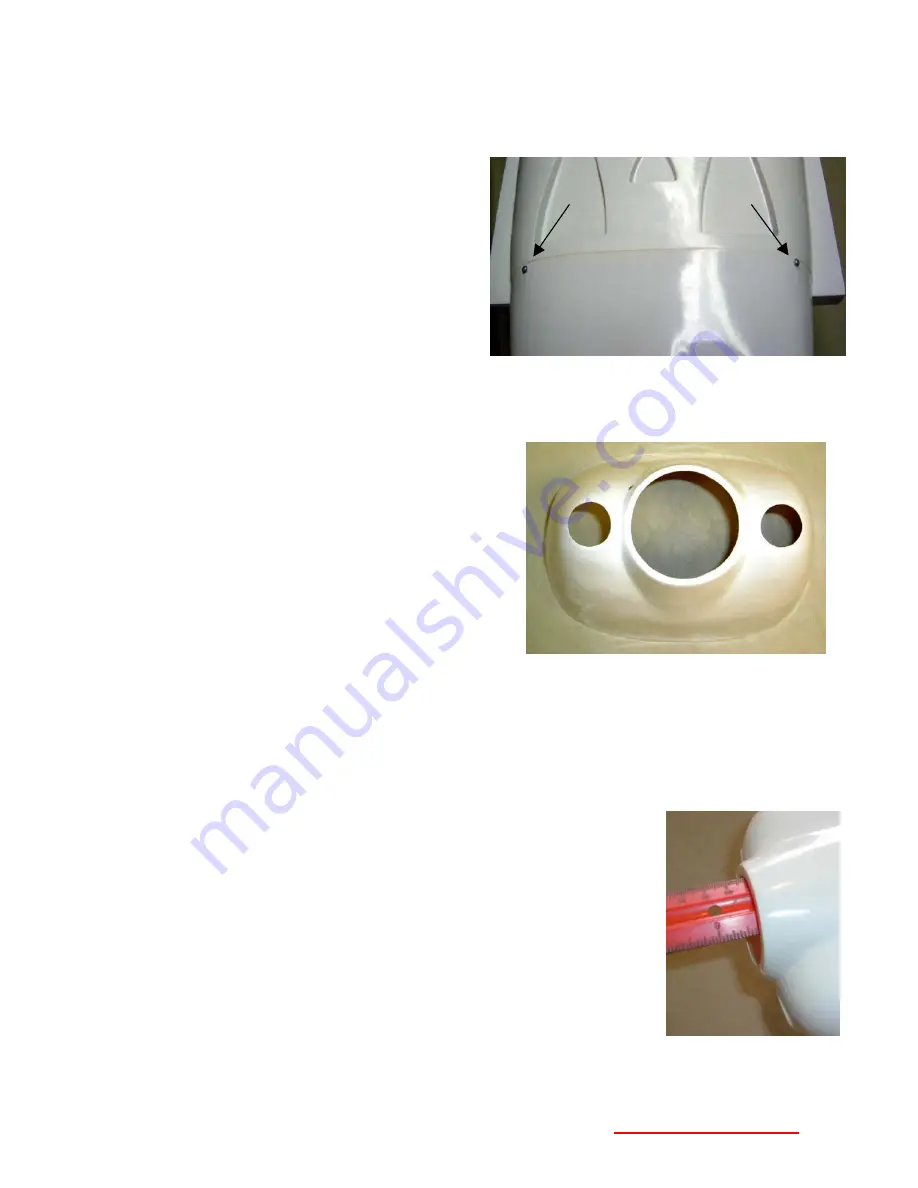
Experimental Aircraft Models
- 20 -
WWW.RCHomebuilts.com
If the cowl does not seat fully along the bottom, don’t panic. Much of the bottom is cut
away for muffler clearance and will ‘widen’ later. Concentrate on the top and sides to
have a minimal gap.
2. Plan to secure the cowl with four, 2.3 x
6mm (#2) washer head screws. Decide
where you want these around the
circumference of the cowl, and place a
‘dot’ with a felt tip pen 5/32” (4 mm) aft of
the ‘joggle’ on the cowl.
a. We like about ¼” (6 mm) to the
outside of each large air inlet and
about ¼” below the trailing edge of
the wing fairing.
3. When comfortable with the fit, drill a 5/64” (2 mm) hole at each dot,
4. Install a #2 x3/8” washer head screw in each hole to verify fit. Then remove the cowl.
5. Now is a good time to finish the openings in the
cowl. A fine rat tail file or flexible shaft tool (e.g.
Dremel
TM
) with a small milling bit works great.
We recommend opening the round air outlet
holes to the outer circumference, flush with the
surface of the cowl to allow smooth exit flow of
air. Also open the large center hole. Leave
about 1/8” lip around the circumference for
support.
Positioning and Installing the Engine
The objective of this section is to place the engine on the firewall so that the back of the spinner
clears the rear of the cowl by 1/8” (3mm), and the spinner is centered on the cowl. Our instructions
will work for all brands of engines.
Positioning the engine fore/aft (front to back) on the motor mount
1) Place the cowl on the model and secure with a few screws.
2) Measure from the firewall to the front edge of the cowl through the
center opening. It is approximately 5 1/4” (133 mm)
3) Place the motor mounts on a couple pieces of wood so that the
engine sits high enough to not bottom out on the bench.
















































